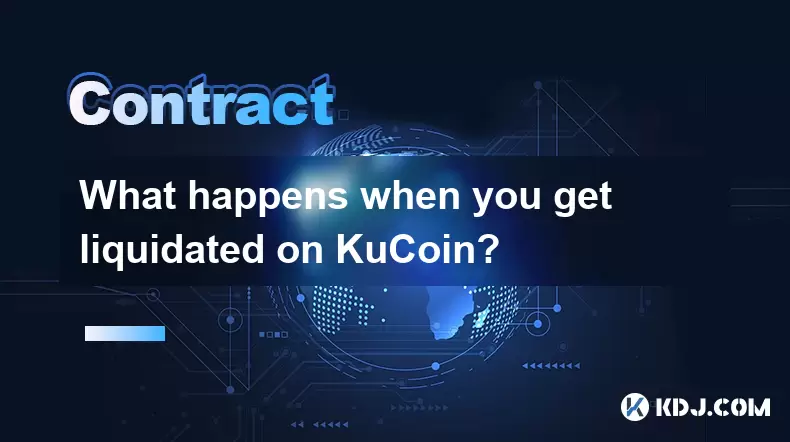-
 Bitcoin
Bitcoin $117700
-0.03% -
 Ethereum
Ethereum $3805
0.49% -
 XRP
XRP $3.098
-1.00% -
 Tether USDt
Tether USDt $1.000
0.03% -
 BNB
BNB $792.8
-1.72% -
 Solana
Solana $177.9
-1.95% -
 USDC
USDC $1.000
0.02% -
 Dogecoin
Dogecoin $0.2202
-1.55% -
 TRON
TRON $0.3278
-2.92% -
 Cardano
Cardano $0.7641
-2.43% -
 Hyperliquid
Hyperliquid $42.21
-2.68% -
 Sui
Sui $3.758
-1.58% -
 Stellar
Stellar $0.4080
-3.21% -
 Chainlink
Chainlink $17.75
-0.33% -
 Bitcoin Cash
Bitcoin Cash $591.8
4.96% -
 Hedera
Hedera $0.2561
-3.09% -
 Avalanche
Avalanche $23.34
-4.24% -
 Litecoin
Litecoin $110.7
1.96% -
 UNUS SED LEO
UNUS SED LEO $8.956
-0.01% -
 Toncoin
Toncoin $3.410
0.79% -
 Ethena USDe
Ethena USDe $1.001
0.03% -
 Shiba Inu
Shiba Inu $0.00001288
-1.82% -
 Uniswap
Uniswap $10.07
-2.06% -
 Polkadot
Polkadot $3.807
-2.27% -
 Monero
Monero $308.2
-2.15% -
 Dai
Dai $1.000
0.03% -
 Bitget Token
Bitget Token $4.521
-0.30% -
 Pepe
Pepe $0.00001134
-1.52% -
 Cronos
Cronos $0.1457
0.65% -
 Aave
Aave $274.9
-2.47%
What happens when you get liquidated on KuCoin?
On KuCoin Futures, liquidation occurs when your margin ratio hits 100%, triggering automatic position closure to prevent further losses—monitor your liquidation price and use stop-losses to stay safe. (154 characters)
Jul 30, 2025 at 06:43 am

Understanding Liquidation on KuCoin
When you engage in futures trading on KuCoin, your positions are backed by margin—essentially collateral. If the market moves against your position and your equity (your balance plus unrealized P&L) drops to the maintenance margin level, KuCoin triggers a liquidation. This means the platform automatically closes your position to prevent further losses that could exceed your deposited margin. Liquidation is not optional—it's an automated risk control mechanism designed to protect both you and the exchange from negative balances.
What Triggers a Liquidation?
Liquidation occurs when your margin ratio hits or falls below the liquidation price. This price is calculated based on your leverage, entry price, and position size. For example, if you open a long position with 10x leverage and the price of the asset drops sharply, your unrealized loss grows. Once the margin ratio (total margin / maintenance margin) reaches 100%, the system flags your position for liquidation.
- Check your position page in real time for the liquidation price indicator.
- Monitor your margin ratio—if it approaches 100%, add margin or reduce position size.
- Understand that funding fees and price volatility can accelerate margin depletion.
How KuCoin Handles the Liquidation Process
KuCoin uses a two-step process: auto-deleveraging (ADL) or insurance fund coverage, depending on market conditions. - If your position is closed via ADL, it means another trader with an opposing position (e.g., a short if you were long) takes over your liquidated position at the bankruptcy price. Their account must have sufficient margin to absorb it.
- If ADL isn't possible due to lack of counterparty liquidity, KuCoin uses its insurance fund to cover the difference between your bankruptcy price and the actual close price.
- In both cases, your position is closed instantly—you cannot cancel or pause the process once the liquidation threshold is breached.
What Happens to Your Funds After Liquidation?
After liquidation, your margin balance is adjusted based on the final settlement. - If the position was closed via insurance fund, your remaining equity (if any) is returned to your wallet.
- If ADL occurred, the counterparty trader assumes the position, and your margin is settled accordingly—you lose the entire margin allocated to that position.
- You may see a "Liquidated" status in your position history. Clicking it reveals the exact time, price, and method of liquidation.
- No further losses are incurred beyond your initial margin—KuCoin’s system prevents negative balances.
How to Avoid Liquidation on KuCoin
Prevention is always better than reacting post-liquidation. - Use lower leverage—high leverage magnifies both gains and losses.
- Set stop-loss orders manually to exit before reaching the liquidation price.
- Enable margin call alerts in KuCoin Futures settings to get email or SMS notifications when your margin ratio drops below 200%.
- Regularly add margin to open positions if the market moves against you—this increases your buffer.
- Avoid holding positions during high-volatility events like macroeconomic announcements unless you’re actively managing them.
Recovering from a Liquidation Event
If liquidation happens, the first step is to review your position history. - Go to Futures > Positions > History and locate the liquidated trade.
- Analyze the liquidation price vs. market price—was it a sudden spike or gradual decline?
- Check if ADL or insurance fund handled the closure—this affects how much margin you lost.
- Do not immediately re-enter the market; instead, adjust your strategy: reduce leverage, tighten stop-losses, or paper-trade first.
- KuCoin does not charge extra fees for liquidation—it’s part of the risk you accept when trading leveraged products.
Frequently Asked Questions
Can I get my funds back after liquidation on KuCoin?
No—once liquidated, the margin used for that position is fully lost. If the insurance fund covered the close, no additional funds are deducted from you. If ADL occurred, the counterparty trader absorbed the position, and your margin is gone.Does KuCoin notify me before liquidation?
Yes—if you enable margin call alerts in your Futures settings, you’ll receive notifications when your margin ratio drops below 200%. This gives you time to add margin or close the position manually.Why did my position liquidate even though the price moved back?
Liquidation is triggered instantly when the liquidation price is hit—it doesn’t wait for price recovery. Even if the market rebounds seconds later, the system has already closed your position to prevent deeper losses.Is liquidation the same across all KuCoin futures pairs?
Yes—the mechanics are identical whether you’re trading BTC/USDT, ETH/USDT, or altcoin pairs. However, more volatile assets (like altcoins) may liquidate faster due to larger price swings, so adjust leverage accordingly.
Disclaimer:info@kdj.com
The information provided is not trading advice. kdj.com does not assume any responsibility for any investments made based on the information provided in this article. Cryptocurrencies are highly volatile and it is highly recommended that you invest with caution after thorough research!
If you believe that the content used on this website infringes your copyright, please contact us immediately (info@kdj.com) and we will delete it promptly.
- Retail, Crypto, Visibility: Decoding the Signals in Today's Market
- 2025-07-31 12:31:08
- Bitcoin, Altcoin Selloff, and the FOMC Decision: A Crypto Market Rollercoaster
- 2025-07-31 12:35:33
- Cold Wallet vs. MetaMask: A Crypto Wallet Revolution?
- 2025-07-31 10:30:57
- Bitcoin Casinos in 2025: Instant Payouts and Welcome Bonuses
- 2025-07-31 10:50:33
- Meme Coins in 2025: Token Burns and the Quest for Moonshots
- 2025-07-31 10:50:33
- Unlocking Value: A Deep Dive into Random Year 1 oz Krugerrand Gold Coins
- 2025-07-31 10:57:21
Related knowledge

Why is my Bitstamp futures position being liquidated?
Jul 23,2025 at 11:08am
Understanding Futures Liquidation on BitstampFutures trading on Bitstamp involves borrowing funds to open leveraged positions, which amplifies both po...

How to report Bitstamp futures for taxes?
Jul 30,2025 at 08:35am
Understanding Bitstamp Futures and Taxable EventsWhen trading Bitstamp futures, it’s essential to recognize that these financial instruments are treat...

Does Bitstamp offer inverse contracts?
Jul 23,2025 at 01:28pm
Understanding Inverse Contracts in Cryptocurrency TradingIn the realm of cryptocurrency derivatives, inverse contracts are a specific type of futures ...

What is the difference between futures and perpetuals on Bitstamp?
Jul 27,2025 at 05:08am
Understanding Futures Contracts on BitstampFutures contracts on Bitstamp are financial derivatives that allow traders to speculate on the future price...

How to find your Bitstamp futures trade history?
Jul 23,2025 at 08:07am
Understanding Bitstamp and Futures Trading AvailabilityAs of the current state of Bitstamp’s service offerings, it is critical to clarify that Bitstam...

Can I use a trailing stop on Bitstamp futures?
Jul 23,2025 at 01:42pm
Understanding Trailing Stops in Cryptocurrency TradingA trailing stop is a dynamic type of stop-loss order that adjusts automatically as the price of ...

Why is my Bitstamp futures position being liquidated?
Jul 23,2025 at 11:08am
Understanding Futures Liquidation on BitstampFutures trading on Bitstamp involves borrowing funds to open leveraged positions, which amplifies both po...

How to report Bitstamp futures for taxes?
Jul 30,2025 at 08:35am
Understanding Bitstamp Futures and Taxable EventsWhen trading Bitstamp futures, it’s essential to recognize that these financial instruments are treat...

Does Bitstamp offer inverse contracts?
Jul 23,2025 at 01:28pm
Understanding Inverse Contracts in Cryptocurrency TradingIn the realm of cryptocurrency derivatives, inverse contracts are a specific type of futures ...

What is the difference between futures and perpetuals on Bitstamp?
Jul 27,2025 at 05:08am
Understanding Futures Contracts on BitstampFutures contracts on Bitstamp are financial derivatives that allow traders to speculate on the future price...

How to find your Bitstamp futures trade history?
Jul 23,2025 at 08:07am
Understanding Bitstamp and Futures Trading AvailabilityAs of the current state of Bitstamp’s service offerings, it is critical to clarify that Bitstam...

Can I use a trailing stop on Bitstamp futures?
Jul 23,2025 at 01:42pm
Understanding Trailing Stops in Cryptocurrency TradingA trailing stop is a dynamic type of stop-loss order that adjusts automatically as the price of ...
See all articles

























































































